The black device is an internally triggered triac which contains a an ordinary triac integrated with a diac trigger device. You could replace the internally triggered triac with a triac+diac, but that device generally can only be used in applications such as lamp dimmers. The part is similar (or identical, save for markings) to this one (Q2010LT 10A 200V with house markings for Leviton, according to random and non-authoritative web sources- but certainly a very similar part).

The entire circuit consists of that device, the capacitor you circled (probably about 100nF X7R and rated for 50-100V), the EMI-reduction inductor (the copper coil on a ferrite rod you circled) in series with the load (probably about 100uH 5A) and a custom rheostat made with the white ceramic substrate and a thick film printed element (the black strip- probably a few hundred K ohms). The two sliding contacts from the toggle lever slide along the substrate shorting the resistive strip element to the parallel metal strip so the total resistance varies from the element resistance to about zero.
There is also a mechanical changeover contact that operates when the toggle is at the 'low brightness' end (both to transfer for the three-way function and to positively open up and turn the load off). At the 'high brightness' end there is a deliberate dead spot in the rheostat so the lamp turns more-or-less fully on despite mechanical tolerances- that's the metal at the left end of the element so the sliding contact touches metal to metal. The below circuit is representative, without the contact and series inductor.

I believe the particularly thin free-air wire from the inductor to the ceramic right side acts as a load fuse, since they otherwise could have used the inductor lead directly, as was done on the other side. They chose the side away from the triac and suspended the wire in air because the wire gets hot in normal operation and the triac needs to be kept cool.
The 'fuse' is solely a safety device to keep the wiring from getting dangerously hot- it will not reliably save the triac in case of a short.




